Breeding Journal DataSheet for Pterapogon kauderni
I have worked with 2 pairs of Pterapogon kauderni to date. This journal will not reflect the entirety of that experience. I am limiting this thread to my single successful attempt at artificial incubation.
General Species: Pterapogon kauderni
Social Structure: semi-monogamous pairing
Size of Individuals: male around 2", female around 1.75"
Age of Individuals: unknown, WC
Date added to Tank: 9-5-2007
Broodstock Tank Details Size of Tank: 24 gallon nanocube
Substrate Details: live sand
Filtration Details: stock with a Remora C Skimmer
Water Changes: Typically 25% weekly
Water Temperature: 78-80F
Lighting: Metal Halide
Lighting Cycle: 12 hours, on timer
Other Tank Inhabitants: too many to mention

Tank was a reef tank with many other pairs of fish
Broodstock Feeding Details Food Types: Frozen Squid, PE Mysis, enriched brine, you name it.
Feeding Schedule: Multiple times per day
Spawning Details Date of First Spawn: N/A - this journal entry is specifically about a spawn that occured on 1/2/2008 in my wild caught pair (I had a CB pair as well at the time)
Spawn Time of Day: 5-6 PM
Dates of Consecutive Spawns: too many to list
CourtShip Details: Typical Banggai Cardinalfish courtship, with trembling & parallel swimming occuring prior to spawn
Egg Size: biggest marine fish eggs I've ever seen. Almost as large as the eggs of Cyphotilapia frontosa (the Frontosa Cichlid, freshwater fish)
Egg Color: tan/beige. Opaque
Egg Count: probably less than 50. Eggs were removed from the male after 4 days of incubation.
Hatch Details Hatch Date: 1/11/2008 (this is known, because the babies were in artificial incubation and could be observed)
Hatch Time of Day: n/a
# Days after Spawn: 9
Larvae Description: As hatchlings, they still have massive yolks and are unable to swim. They would still be in the male's mouth normally. In freshwater, these fish would be called "wrigglers".
Larval Tank Details Temperature: 82F
Size of Larval Tank: 10 gallons
Substrate Details: none
Other Tank Decor: none
Filtration Details: I don't honestly remember, but I may have had a duetto internal power filter going
Lighting: stock lighting
Lighting Cycle: I believe I kept the lights off during this time, as the babies would normally be in the male's mouth
Water Changes: none during incubation
Larval Feeding Details Food Types: NONE - larvae / hatchinglings do not yet feed
Feeding Schedule: N/A
Metamorphosis/Settlement Date of Settlement Start: 1-23-2008
Days after Hatch: 12 days post hatch, 21 days post spawn.
Date of Settlement End: same
Description of Fry: Perfect minatures of the adults up and swimming in the incubator
Grow-Out Tank Details Temperature: 82F
Size of Grow-Out Tank: a screened off portion of a 10 gallon tank
Substrate Details: none
Other Tank Decor: artificial / fake longspine urchin created with black cable ties and reef epoxy putty.
Filtration Details: Duetto Internal power filter
Lighting: stock lighting
Lighting Cycle: probably varied as it was not on a timer
Water Changes: did not record
Size at Transfer: maybe 6 mm? I never really measured.
Age at Transfer: 21 days
Grow-Out Feeding Details Food Types: live baby brine shrimp enriched with selcon, phytofeast, or live phytoplankton. Cyclopeeze offered later on, as well as mysis and brine shrimp as the babies grew.
Feeding Schedule: multiple feedings per day.
Additional Information Miscellaneous Information:
What is unique is that this was a situation where the babies were artificially incubated. In both of my Banggai Pairs, I routinely have males abort or consume spawns. At first I thought it was an isolated problem and possibly something wrong with my captive bred broodstock, but when my wild caught pair also refused to hold eggs to term, I realized there was something else at play. We never figured out what the problem was, but the likely culprits include small tank size and too many tankmates. Overally, the fish were probably just far too nervous to hold to term in my broodstock reefs.
The entire process of artificial incubation was documented on this thread @ MOFIB -
http://www.marinebreeder....c.php?f=166&t=1769 - be sure to read it as I may have left something out here. Those are my ORIGINAL NOTES

The actual incubation devise was a plain tall glass vase I believe I purchased at Michael's (hobby and craft store). The important part to note is that it has a rounded bottom. Water was fed into the incubation vessle through a rigid 1/4" tube attached to a tiny powerhead...the flow was controled with a very small inline needle valve (typically used for air flow regulation). With this setup, I was able to gently tumble the eggs at the bottom of the vase. There was never enough current to blow the egg mass up and out of the vase.
Here are some pictures of the process.
Male Banggai Mouthbrooding - note this is actually the male in my CB pair, shot a full 8 months before I ever obtained my WC pair.
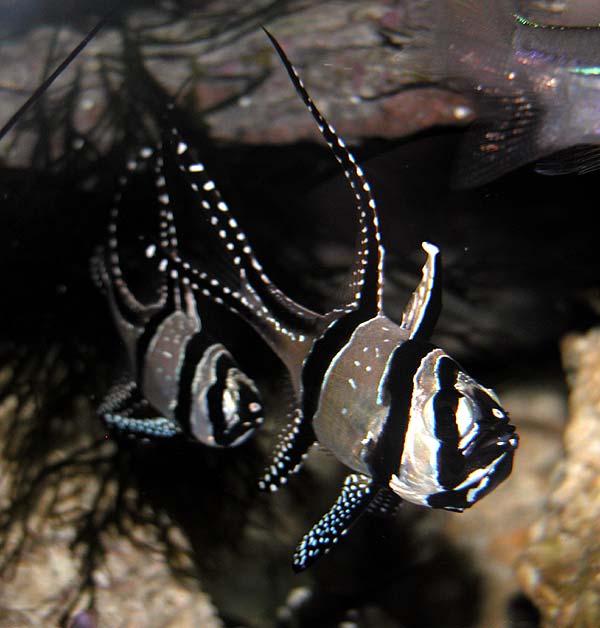 Male Banggai with eggs
Male Banggai with eggs - this was from a later spawn in my WC pair
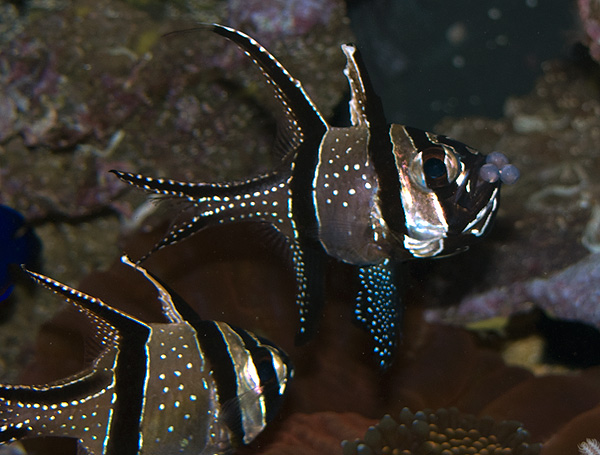 98 hour post spawn egg at 60X - note the larval fish already forming at left
98 hour post spawn egg at 60X - note the larval fish already forming at left 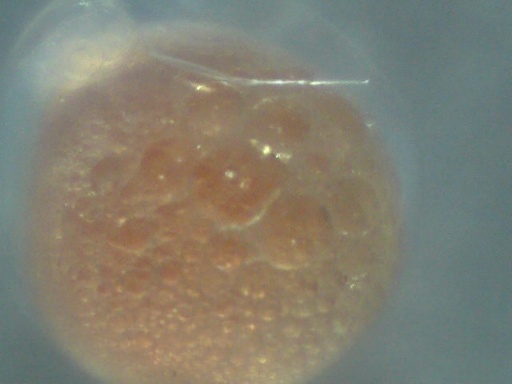 In artificial incubation at 7 days post spawn
In artificial incubation at 7 days post spawn 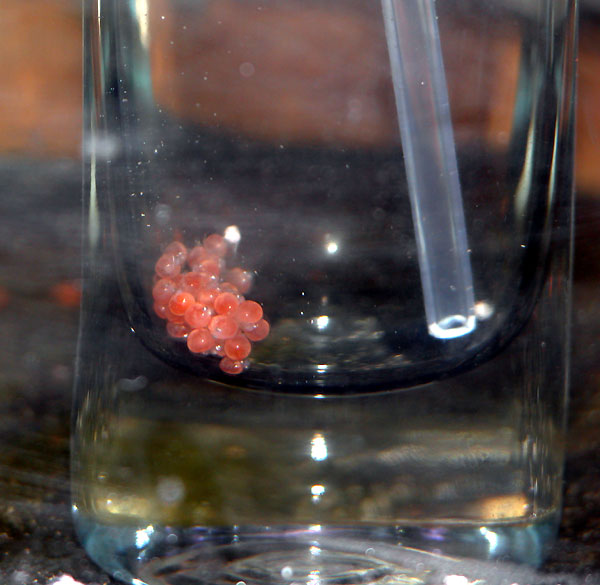 9 days post spawn, and they have "hatched" out as "wrigglers"
9 days post spawn, and they have "hatched" out as "wrigglers" 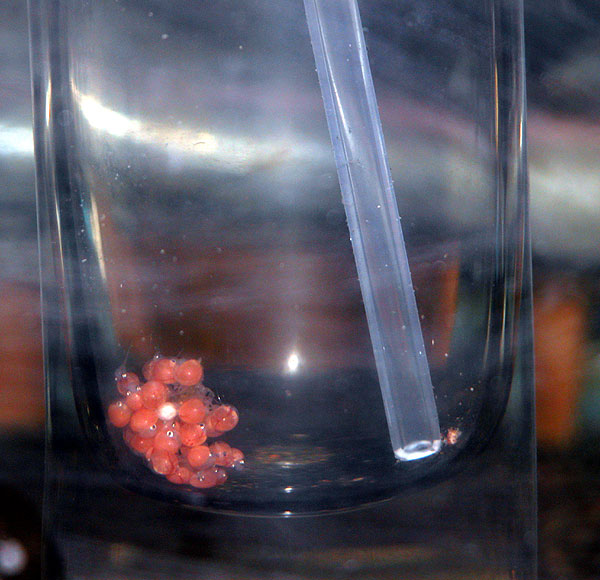 18 days post spawn
18 days post spawn 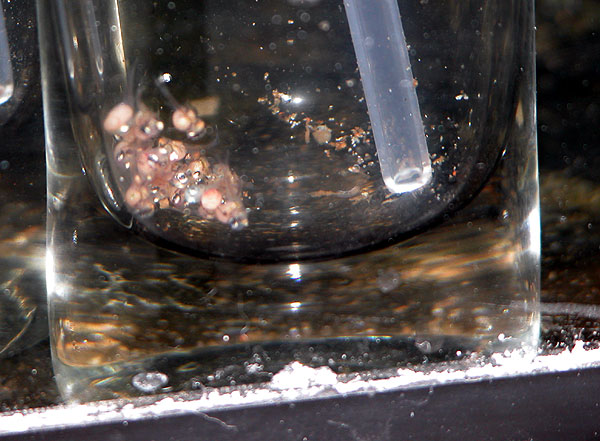 20 days post spawn
20 days post spawn 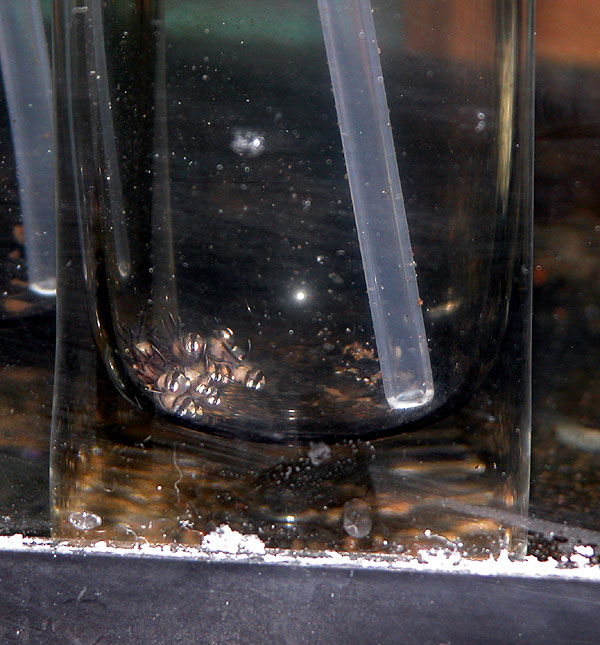 21 days, what you might call "settlement" although in natural incubation, the male might hold them for another couple days
21 days, what you might call "settlement" although in natural incubation, the male might hold them for another couple days 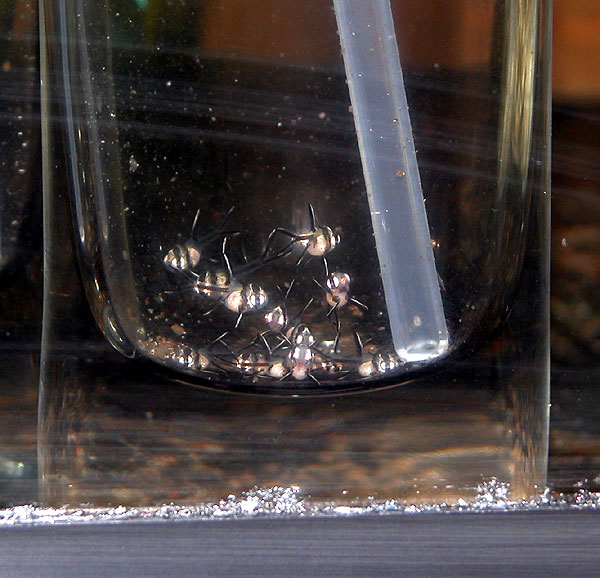 22 days post spawn
22 days post spawn 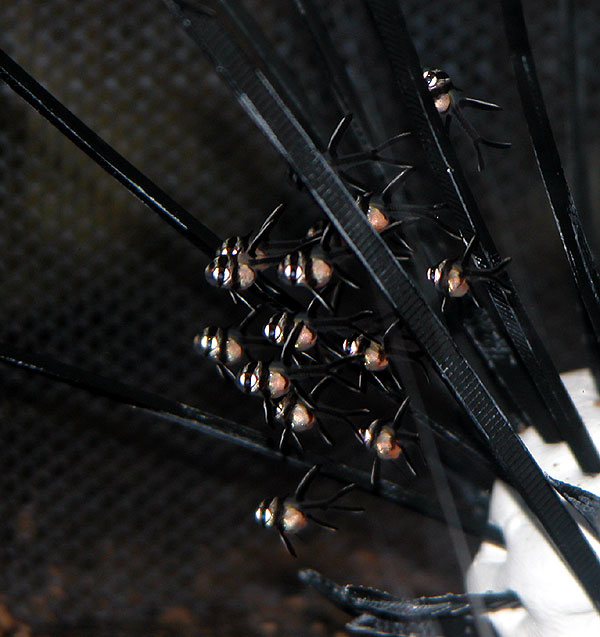 29 days post spawn
29 days post spawn 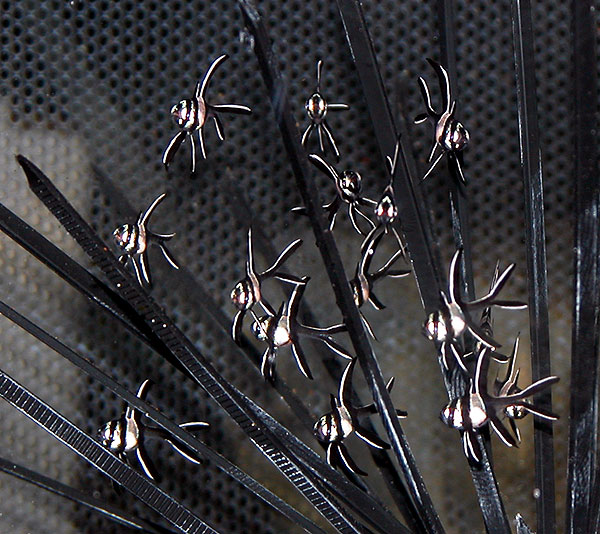 83 days post settlement + 21 days between spawning and settlement = 104 days post spawn!
83 days post settlement + 21 days between spawning and settlement = 104 days post spawn! 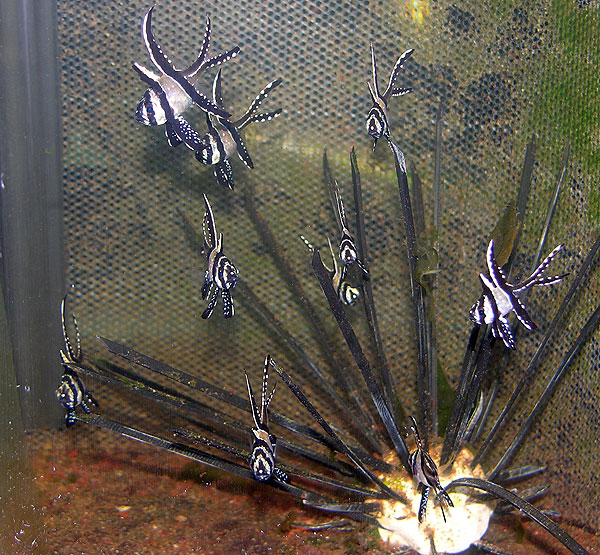
Babies were all sold off shortly thereafter. Success!
<message edited by mPedersen on Monday, January 18, 2010 11:54 PM>